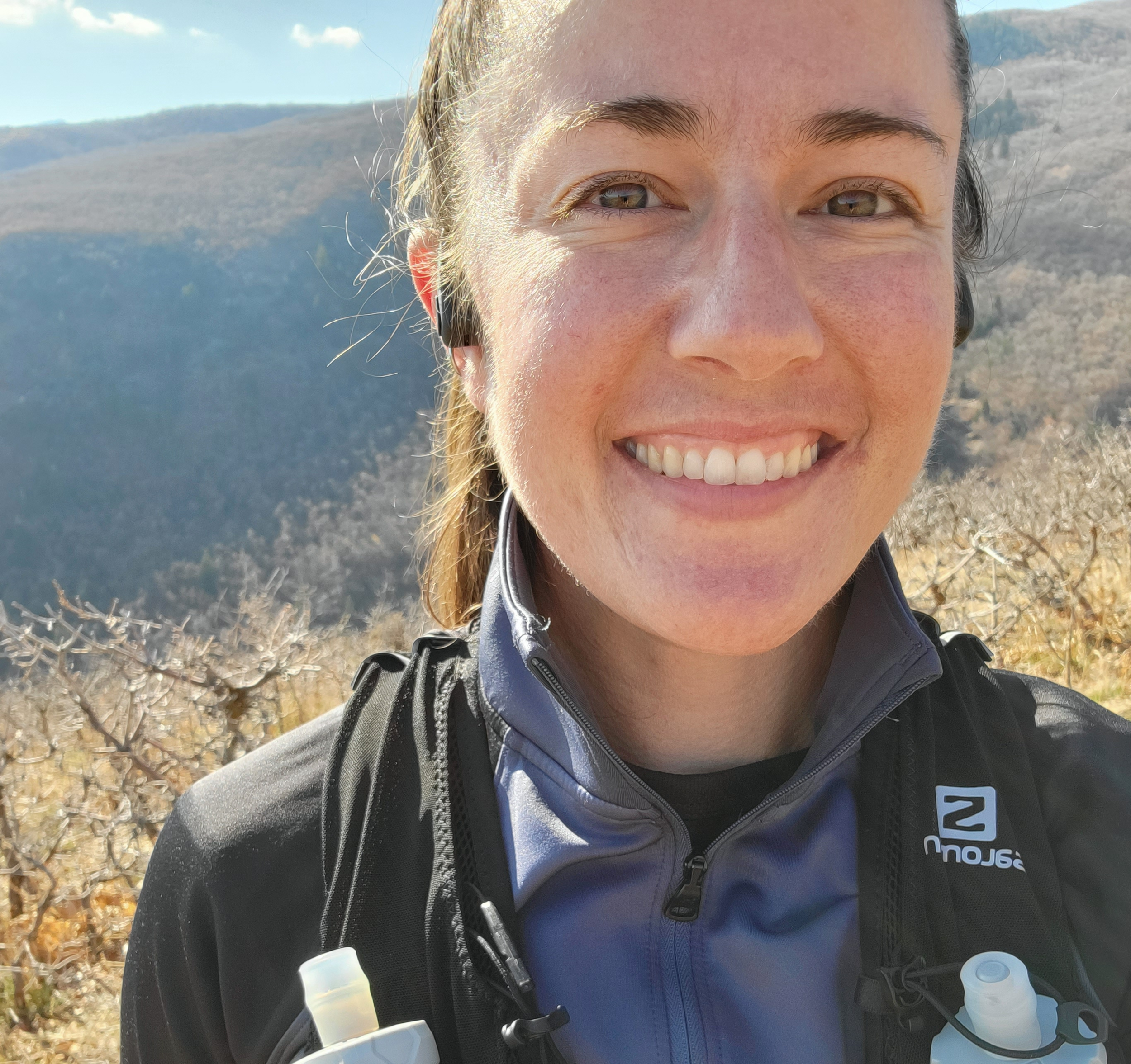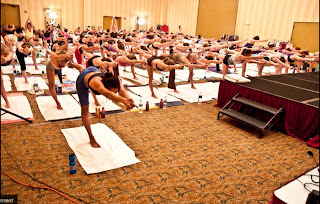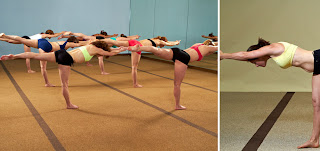The Complete Guide to Crafting an Effective Yin Yoga Class Script for Deep Relaxation and Mindful Stretching
/Welcome to the complete guide on crafting an effective Yin Yoga class script for deep relaxation and mindful stretching. Whether you're a seasoned yoga instructor or new to the practice, this article will provide you with valuable insights and strategies to create a transformative and rejuvenating experience for your students.
Yin Yoga is a gentle and calming form of yoga that focuses on long-held poses and gentle stretches. It targets the connective tissues, joints, and fascia, promoting deep relaxation and increased flexibility. Creating a well-structured Yin Yoga class script is essential to guide your students through a seamless practice that nourishes the mind, body, and spirit.
In this guide, we'll explore the key elements of a successful Yin Yoga class script, including breathwork, meditation, and mindful stretching. We'll also delve into sequencing and timing, providing you with practical tips to enhance the flow of your classes. Additionally, we'll discuss how to incorporate themes and intentions to create a more meaningful and transformative experience for your students.
Get ready to deepen your understanding of Yin Yoga and refine your teaching skills as we embark on this journey together. Let's create an extraordinary experience of relaxation and mindful stretching through an effective Yin Yoga class script that leaves a lasting impact on your students.
Understanding Yin Yoga
Yin Yoga is a unique and meditative style of yoga that emphasizes the slow, passive stretching of the body’s connective tissues, particularly the fascia, ligaments, and joints. Unlike more dynamic styles of yoga, Yin Yoga poses are typically held for extended periods, often ranging from three to five minutes or longer. This practice encourages practitioners to explore the depths of their bodily sensations and cultivate a sense of stillness and introspection. The gentle approach of Yin Yoga allows for a deeper connection to the body and mind, fostering a tranquil state that can lead to profound relaxation.
The origins of Yin Yoga can be traced back to ancient Chinese philosophies, which emphasize the balance of yin and yang energies. Yin represents qualities such as stillness, receptivity, and introspection, while yang embodies movement, activity, and outward expression. By integrating these concepts into yoga, practitioners are encouraged to balance their energetic states, promoting overall well-being. As students settle into longer-held poses, they are invited to explore their breath and deepen their awareness, cultivating mindfulness and presence.
Incorporating Yin Yoga into one’s practice can be particularly beneficial for those experiencing stress, anxiety, or fatigue. The slower pace allows individuals to unwind and release tension held in the body, facilitating not only physical flexibility but also mental clarity and emotional stability. As practitioners learn to embrace discomfort and stillness, they develop resilience and a greater understanding of their internal landscapes, making Yin Yoga a powerful tool for personal growth and healing.
Benefits of Yin Yoga
The benefits of Yin Yoga extend far beyond physical flexibility. One of the most significant advantages is its ability to promote deep relaxation and stress relief. In our fast-paced world, many individuals struggle with chronic stress and anxiety. Yin Yoga provides a sanctuary where students can escape the hustle and bustle of daily life, allowing them to slow down and reconnect with themselves. By holding poses for extended periods, practitioners engage in deep breathing and conscious awareness, which calms the nervous system and fosters a sense of peace.
Additionally, Yin Yoga enhances joint health and mobility by targeting the connective tissues that surround the joints. As poses are held, the gentle stretching encourages increased circulation and hydration of the fascia. This not only improves flexibility but also supports the long-term health of the joints, making it particularly beneficial for older adults or those recovering from injuries. Furthermore, it can aid in the prevention of injury by promoting balanced muscle tension and joint stability.
Another key benefit of Yin Yoga lies in its ability to cultivate mindfulness and emotional resilience. By encouraging practitioners to sit with their thoughts, feelings, and physical sensations, Yin Yoga fosters a deeper understanding of oneself. This practice of self-inquiry can lead to greater self-acceptance and emotional balance, providing tools for coping with life’s challenges. As students learn to navigate their inner experiences with patience and compassion, they often find that the skills developed on the mat translate into their daily lives, enhancing their overall mental well-being.
Key principles of Yin Yoga
Yin Yoga is built upon several core principles that guide its practice and teaching. One of the most fundamental principles is the idea of surrender and acceptance. Practitioners are encouraged to let go of the need to achieve or force their bodies into a particular shape. Instead, they learn to listen to their bodies and honor their limits. This principle fosters a compassionate approach to practice, wherein students cultivate patience and self-awareness rather than striving for perfection.
Another key principle is the concept of passive stretching. In Yin Yoga, the muscles are allowed to relax as practitioners gently settle into their poses. This passive approach allows for a deeper stretch of the connective tissues and facilitates the release of tension that may have accumulated over time. It is essential for students to understand that the goal is not to deepen the stretch forcefully but to find a comfortable edge where they can remain still and breathe.
Finally, the principle of mindfulness plays a vital role in Yin Yoga. Each pose serves as an opportunity for introspection and self-discovery. As practitioners hold poses for extended durations, they are invited to observe their thoughts, emotions, and physical sensations without judgment. This practice of mindfulness enhances the connection between body and mind, allowing students to cultivate a greater sense of presence and awareness. By integrating these principles, Yin Yoga becomes a holistic practice that nurtures both the body and the spirit.
The importance of a well-crafted class script
Creating a well-crafted class script for Yin Yoga is essential for providing a cohesive and transformative experience for students. A thoughtfully structured class script serves as a roadmap that guides both the instructor and students through the practice, ensuring that all key elements are included and that the flow of the session feels seamless. By carefully planning each aspect of the class, instructors can create an atmosphere that promotes relaxation, mindfulness, and deep connection.
Moreover, a well-defined script allows instructors to communicate effectively with their students. Clear instructions help students understand the intention behind each pose and how to approach their practice. This clarity is particularly important in Yin Yoga, where long-held poses can lead to discomfort or uncertainty. By providing guidance on alignment, breath awareness, and mental focus, instructors can empower students to engage fully with their practice and navigate any challenges that arise.
Additionally, a well-crafted class script allows for flexibility and adaptation. While having a structured plan is important, it is equally crucial for instructors to remain open to the unique needs of their students. By observing the energy in the room and being responsive to the group, instructors can modify the script as needed, ensuring that the experience remains authentic and supportive. This balance of structure and adaptability is key to creating a successful Yin Yoga class that resonates with all participants.
Step-by-step guide to creating a Yin Yoga class script
Creating a Yin Yoga class script involves several key steps that ensure a thoughtful and effective session. The first step is to establish a clear theme or intention for the class. This could be based on a particular aspect of Yin Yoga, a seasonal change, or a specific emotional focus such as compassion or gratitude. Having a theme provides a unifying thread that helps to deepen the students' practice and enhances their overall experience.
Once a theme is established, the next step is to select appropriate asanas and plan the sequence. When choosing poses for a Yin Yoga class, it is important to consider the physical needs and abilities of the students. A balanced sequence typically includes poses that target the lower body, hips, spine, and upper body, allowing for a comprehensive stretching experience. In Yin Yoga, it is also beneficial to incorporate counterposes to maintain balance and to introduce a gentle progression that prepares students for more intense stretches.
After selecting the asanas, instructors should outline the timing for each pose. In Yin Yoga, poses are typically held for three to five minutes, but this can be adjusted based on the level of the class and the specific intention of the practice. Instructors should also plan for transitions between poses, ensuring that students have ample time to settle into each new position. Additionally, integrating moments of guided meditation or breathwork between poses can enhance relaxation and mindfulness, enriching the overall experience of the class.
Preparing the space and setting the mood
The physical environment in which a Yin Yoga class takes place plays a crucial role in setting the mood for relaxation and mindfulness. As an instructor, it is essential to create a welcoming and calming atmosphere that invites students to unwind and feel safe. This can be achieved by choosing a quiet space, free from distractions, where participants can focus on their practice. Soft lighting, such as candles or dimmed lamps, can help to create an intimate and soothing ambiance.
In addition to lighting, consider the use of sensory elements that enhance the overall experience. Playing soft, ambient music or nature sounds can further promote relaxation and help students transition into a meditative state. Aromatherapy, such as essential oils or incense, can also be utilized to create a calming scent in the room. Scents like lavender or sandalwood can have grounding effects and contribute to a serene atmosphere.
Finally, preparing physical props such as bolsters, blankets, and blocks can enhance the comfort of students during their practice. Providing these tools allows individuals to modify poses to suit their needs, encouraging relaxation and ease. Instructors should take the time to arrange the props thoughtfully within the space, ensuring that students can easily access them throughout the class. By paying attention to these details, instructors can create a nurturing environment that fosters a deep sense of relaxation and connection.
Warm-up and centering techniques
Beginning a Yin Yoga class with effective warm-up and centering techniques is essential for preparing both the body and mind for the practice. These initial moments set the tone for the entire session and help students transition from their busy lives into a more mindful state. A gentle warm-up can include simple movements or stretches that promote circulation and loosen tight muscles. Instructors can lead students through easy neck rolls, shoulder shrugs, or gentle spinal twists to release tension and encourage a sense of ease.
After warming up, it is important to introduce centering techniques to ground students in the present moment. One effective method is to guide participants into a seated position or a comfortable lying down pose. Instructors can invite students to close their eyes and focus on their breath, encouraging them to take slow, deep inhalations and exhalations. This mindful breathing practice not only calms the nervous system but also enhances awareness of the body, allowing students to connect with their internal sensations.
Additionally, instructors can incorporate a brief moment of silence or a short guided meditation during this centering phase. This practice of stillness allows students to let go of any lingering distractions and cultivate a sense of presence before delving into the poses. By establishing a strong foundation of warmth and centeredness, instructors set their students up for a successful and enriching Yin Yoga practice.
Asanas and sequencing for a Yin Yoga class
When selecting asanas for a Yin Yoga class, it is essential to create a balanced sequence that targets various areas of the body while honoring the principles of the practice. A well-rounded Yin Yoga class typically includes poses that focus on the lower body, hips, spine, and upper body, allowing for comprehensive stretching and relaxation. Popular Yin poses such as Butterfly, Dragon, and Sphinx can be effectively incorporated into a sequence, offering a mix of intensity and restorative qualities.
It is vital to establish a logical progression within the sequence. Instructors can start with gentle poses that warm up the body, gradually moving toward deeper stretches that challenge the connective tissues. For example, beginning with a seated forward fold can gently open the hips and lower back before transitioning into deeper poses like Half Butterfly or Pigeon. Each pose should be held for several minutes, allowing students to explore their edge while remaining mindful of their breath.
Counterposes are also important to include in the sequence, as they help balance the body and prevent overstretching. After holding a deep hip opener, for instance, instructors might include a gentle spinal twist or a supportive child’s pose to facilitate relaxation and integration. By thoughtfully sequencing the asanas, instructors can create a harmonious flow that guides students through a transformative experience, encouraging them to connect deeply with their bodies and minds.
Incorporating mindfulness and relaxation techniques
Mindfulness is an integral aspect of Yin Yoga, and incorporating specific techniques can enhance the overall experience for students. Throughout the class, instructors can remind participants to focus on their breath, encouraging them to take slow, deep inhalations and exhalations. This practice not only promotes relaxation but also helps to anchor students in the present moment, allowing them to observe their thoughts and sensations without judgment.
In addition to breath awareness, guided imagery or visualization techniques can be beneficial. While holding poses, instructors might invite students to visualize a calming scene, such as a serene beach or a peaceful forest. This imaginative process can help deepen the relaxation response and transport students away from distractions and stressors. By encouraging students to engage their senses and immerse themselves in these mental landscapes, the practice becomes even more enriching.
Another effective technique is to incorporate moments of silence or stillness between poses. After transitioning from one asana to another, instructors can encourage students to take a few breaths in stillness, allowing them to integrate the effects of the previous pose. This brief pause fosters a sense of introspection and invites students to connect with their internal sensations. By weaving mindfulness and relaxation techniques throughout the class, instructors create a nurturing space that supports profound transformation and self-discovery.
Conclusion and final tips for delivering an effective Yin Yoga class
Delivering an effective Yin Yoga class involves a combination of thoughtful planning, clear communication, and genuine presence. As instructors, it is essential to remain adaptable, being responsive to the unique needs and energy levels of students. This flexibility allows for a more personalized experience, enhancing the connection between the instructor and participants.
Additionally, incorporating feedback from students can be invaluable in refining your teaching approach. After each class, consider inviting participants to share their experiences and insights. This can provide valuable information on what resonated with them and what adjustments might enhance future sessions. By fostering an open dialogue, instructors can cultivate a supportive community and continue to grow in their teaching practice.
Ultimately, the goal of a Yin Yoga class is to create a transformative experience that fosters relaxation, mindfulness, and self-awareness. By crafting a thoughtful class script, preparing the space, and incorporating effective techniques, instructors can guide their students on a journey of exploration and healing. As you continue to refine your skills as a Yin Yoga instructor, remember that the practice is as much about your own growth as it is about that of your students. Embrace the journey, and enjoy the profound impact that Yin Yoga can have on both yourself and those you guide.
Want to learn more about the benefits of a yin yoga class script? Read this post: A New Yoga Script for Restorative Yoga and Savasana
Or, grab a copy of my restorative yoga script and use it to plan your next relaxing yin class!











































































Reflections on becoming a book shaman and memoir ghostwriter.
If you've walked through fire and come out transformed, your story is ready to become your legacy.